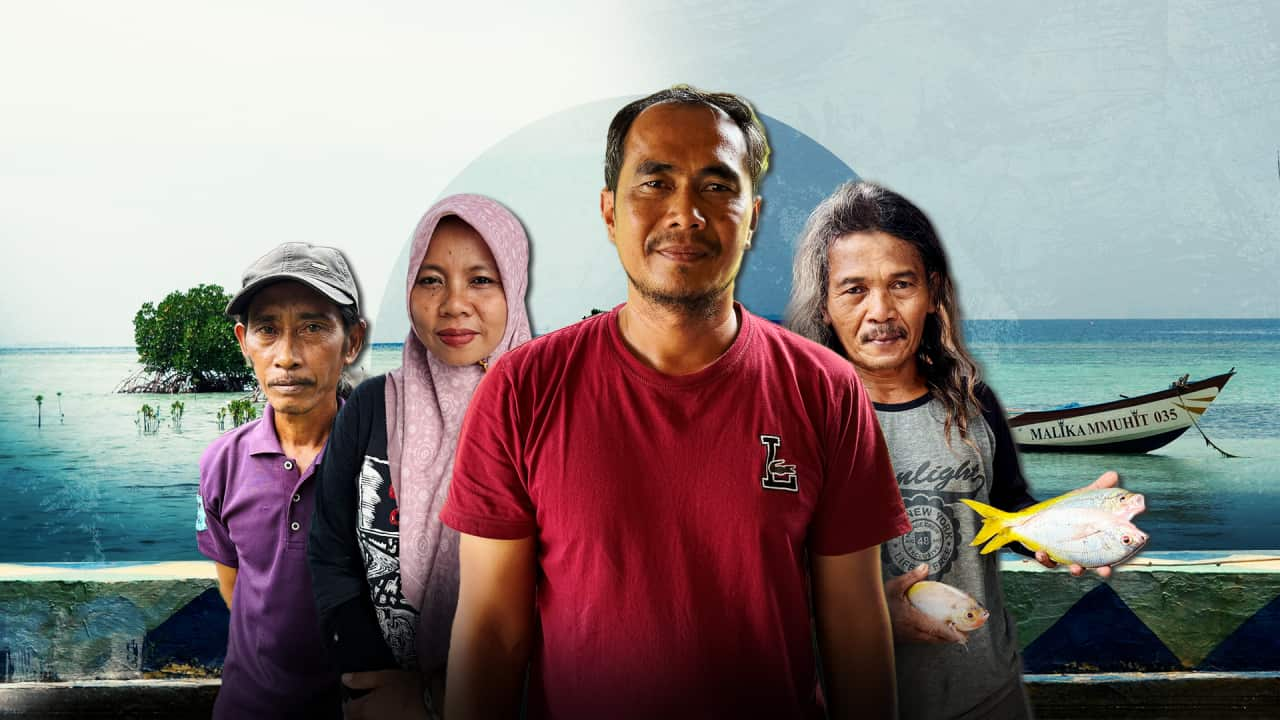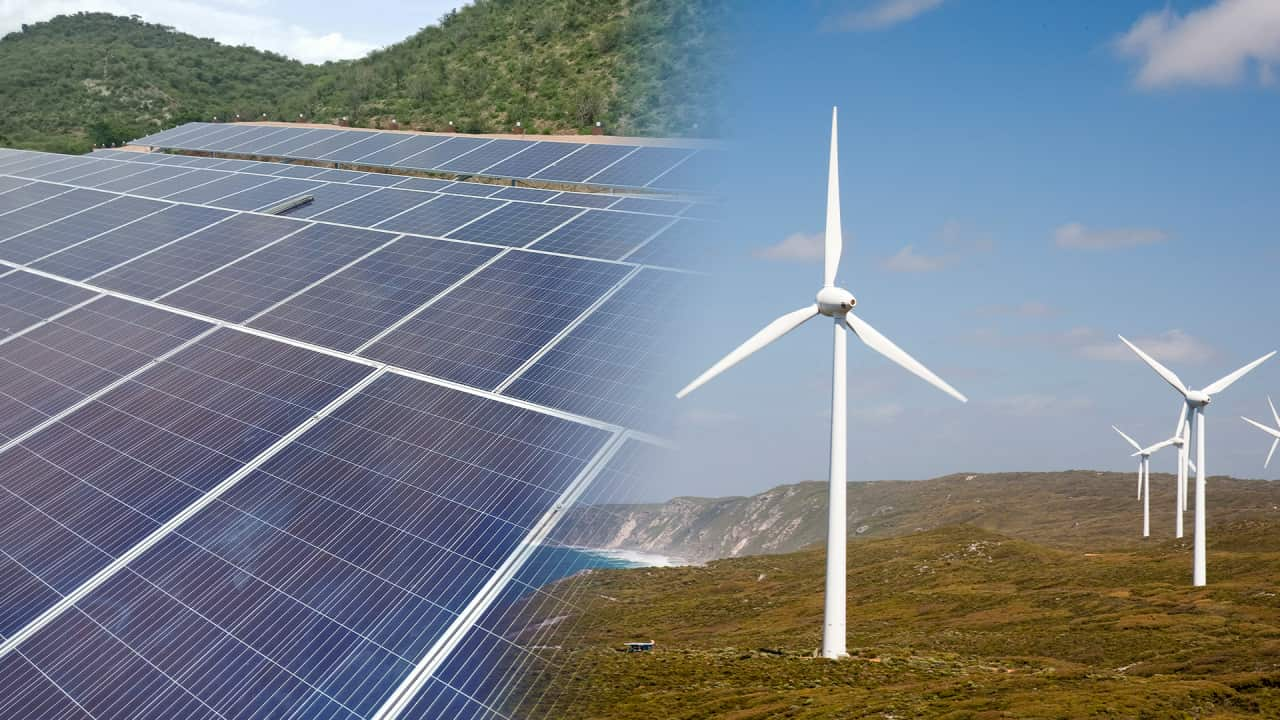Less than two hours by ferry from the grit and gridlock of megacity Jakarta, Pari Island seems almost too good to be true.
The Indonesian capital's 10 million people are swapped for just 1,500. Children spend all day playing barefoot on sandy white beaches, as pristine turquoise seas lap around them.
Then you notice the swing sets and picnic tables peeking out of the water.
"During high tides or tidal floods, the water comes right into the house, up to about here," explains local man Arif Pujianto, pointing to decaying kitchen cabinets inside his home.
"You can still see the marks. It left all this damage, made things rot and fall apart."

Arif Pujianto has lived in this house 50 metres from the shore since he was a small boy. He says it now fills with water at least twice a year. Credit: SBS News / Claudia Farhart
Environmentalists monitoring Pari Island say 11 per cent of it has already been swallowed by the sea, with some projecting the entire island will be underwater by 2050. All around the shore, structures that used to sit on land are now permanently submerged.
"This is my island," Pujianto says.
The place I've lived since I was a child, the place both my parents are buried.
"Other small islands have already started disappearing. If that ever happens," he says, before trailing off.
"I really hope it doesn't. That's why I filed this lawsuit."
Demanding compensation
It is difficult to name a place that has contributed less to human-induced climate change than Pari Island.
There is not a single car in operation; the community grows and catches much of their own food; they've even planted thousands of carbon-capturing mangroves along the coastline in a bid to protect it from further erosion.
Yet it's one of the places in Indonesia where the effects of climate change are being felt most acutely.
Rising tides have damaged homes, warming waters have ruined once-lucrative seaweed farms, and rapidly changing weather patterns have made fishing largely unprofitable.
The community are now demanding damages, having launched a landmark legal case against Swiss cement giant Holcim over its historic carbon emissions.
"We studied this for a long time before finally choosing them, because their emissions are among the highest in the world," one of four plaintiffs, Ibu Asmania, says.
"The warming we feel now is caused by the massive emissions they've been producing since the 1950s."
The cement industry accounts for around 8 per cent of global carbon emissions annually, mostly due to the extreme heat needed to produce clinker (the main ingredient in cement).
Holcim, worth more than $75 billion, is the industry's biggest player.
The plaintiffs are seeking about $6,800 each, arguing Holcim is responsible for 0.42 per cent of all global emissions since 1950 and should therefore pay for the same proportion of the damage caused to Pari Island (equivalent to $27,200 of a total $6,476,190 in emissions-related damage).
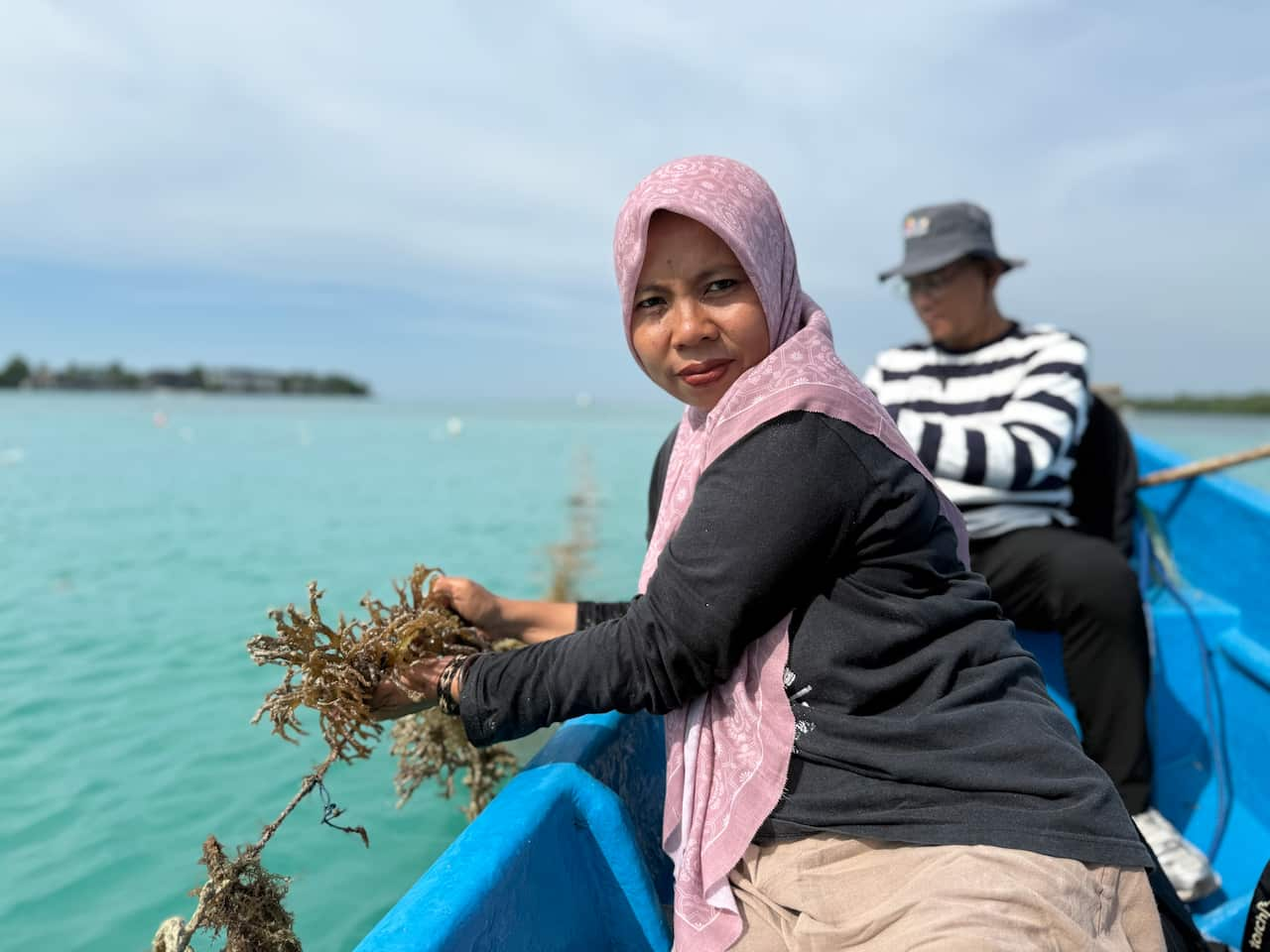
Ibu Asmania and her husband Sartono run a small seaweed farm off the coast of Pari Island. But rising tea temperatures are bleaching their crops. Credit: SBS News / Claudia Farhart
"It would mean our sea could recover, the fish could come back, and the whole ecosystem could heal again."
An ecosystem in turmoil
Asmania and her husband, Sartono, have operated a small seaweed farm just off the coast of Pari Island for 20 years.
Almost every family on the island used to farm seaweed, but today she says only five are still trying.
"At first, we thought the seaweed had some kind of disease. It starts turning white from the tips, then the whole branch turns white, decays and rots. And then it spreads to the other seaweed nearby, one by one, until everything gets damaged," she explains.
But later we learned that it's actually because of climate change. It's because of the increasing sea temperature.
The community's other main source of income — fishing — has not been spared the impacts either.
Bang Bobby is another plaintiff in the Holcim case. He remembers first going out to sea with his parents in his fifth year of primary school. Now 53 years old, he has been fishing the waters off Pari Island ever since.
"We could still predict the seasons back then, including the wind directions month to month," he tells SBS News.
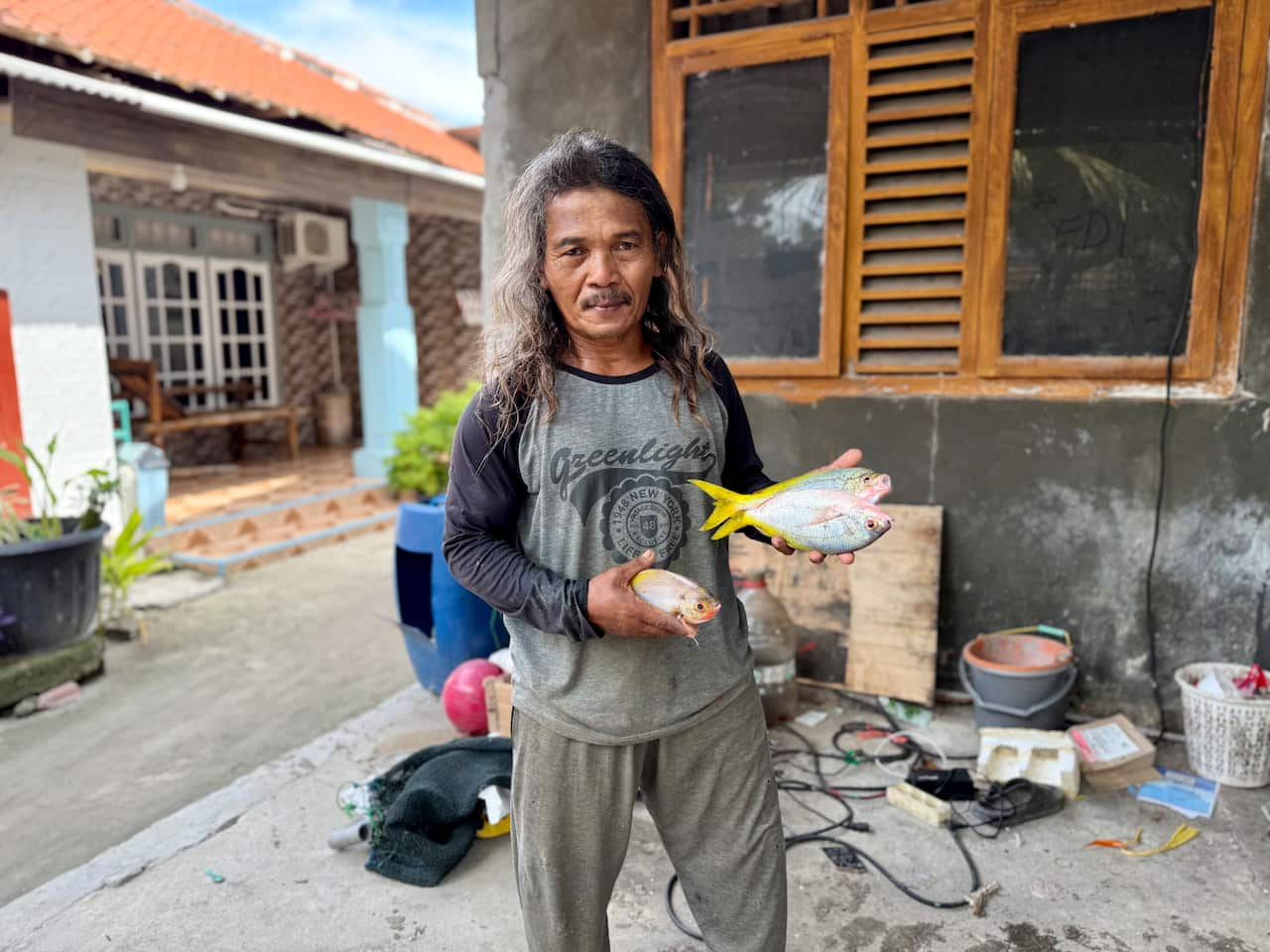
Bang Bobby has been fishing the waters off Pari Island since he was 10 years old. He says changing weather patterns are driving fish away from the island. Credit: SBS News / Claudia Farhart
"Now, we can't predict nature anymore. Every forecast is completely off."
Bobby says fish populations near the island have declined, which means local fishers need to travel much further out to sea to find their daily catch.
Imagine a big basin filled with water. If you drop even a small stone into it, it still creates ripples and waves that reach everywhere. It's the same with emissions.Bang Bobby
During the region's eight-month-long wet season, when storms are sudden and intense, they often need to turn back before catching anything.
The difference in Bobby's income is dramatic; he used to turn a profit of around $500-$600 per month, but now, he is lucky to make $150.
"This is something we have to do. Even though Pari Island is far from Holcim's factories, the emissions they produce have caused the climate change that's reached us here," he says.
"Imagine a big basin filled with water. If you drop even a small stone into it, it still creates ripples and waves that reach everywhere. It's the same with emissions. You can't see them with your eyes, but their impact is real and we can feel it."
Landmark legal battle
No community has ever successfully sued a corporation on another continent over its carbon emissions.
A Peruvian farmer spent the better part of a decade trying to launch a lawsuit against German energy giant RWE, arguing its carbon emissions contributed to glacial flooding in his hometown, but a German court rejected his case in May.
Activists at the Indonesian Forum for the Environment, which is helping the Pari Island community with its legal case, say that if it is successful, it could set an important precedent for other communities seeking climate justice.
"We know that emissions, and therefore the climate crisis, cannot be contained within administrative borders," the forum’s head of monitoring Mas Bagus says.
"Of course, other corporations should also be held accountable. We invite others to do the same.
"Today it's Holcim, tomorrow it could be other companies that must also take responsibility."
The Pari Island plaintiffs travelled to Switzerland in September to make their case with a local court in the town of Zug, where Holcim is headquartered. They're now awaiting the court's decision on whether to consider their complaint.
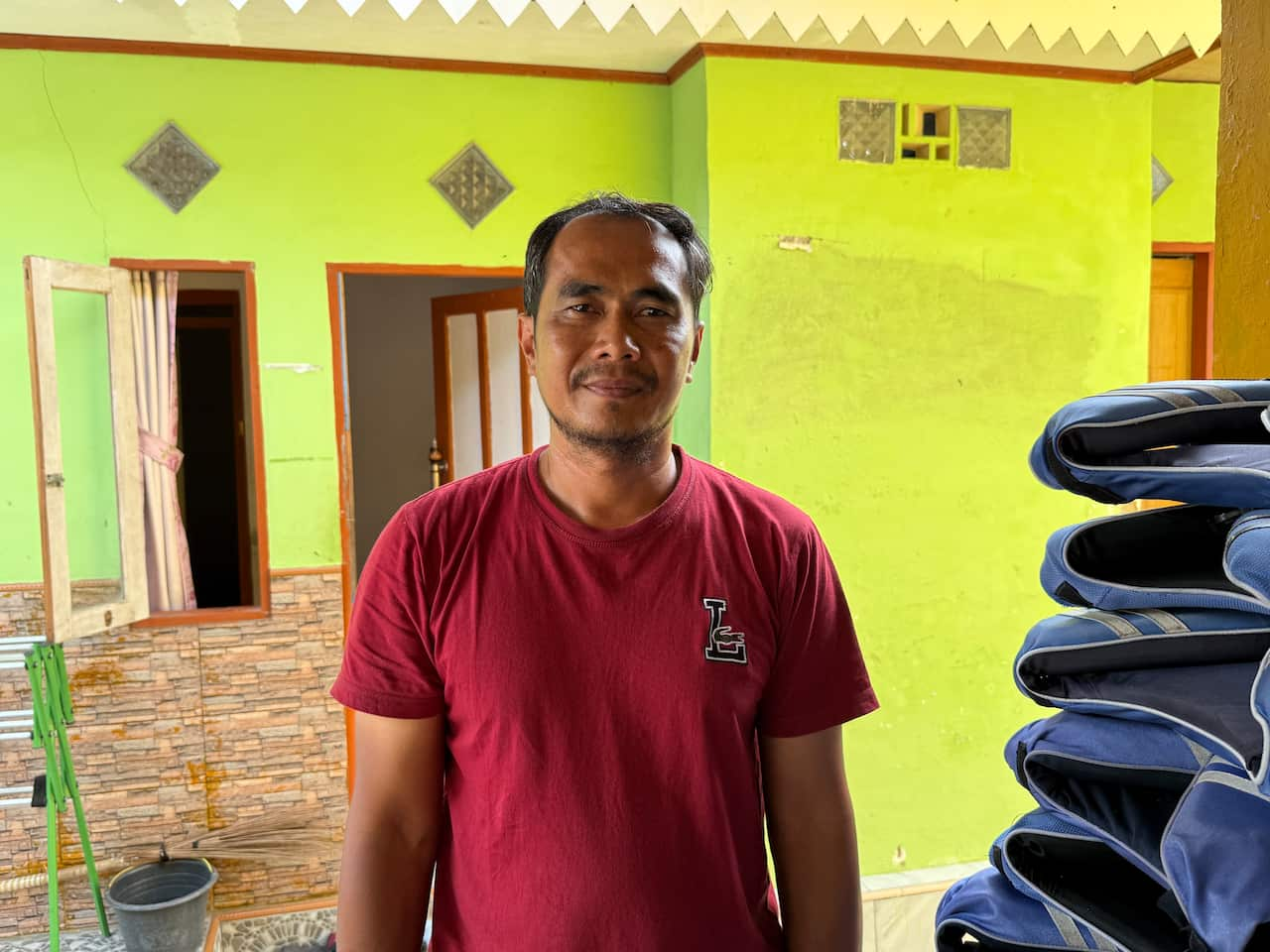
Pari Island man Edi Mulyono says he is taking Holcim to court to protect his children's futures. Credit: SBS News / Claudia Farhart
"We await the court's decision, yet regardless of the outcome, Holcim is fully committed to reaching net zero by 2050."
By then, the people of Pari Island fear it will be too late.
"I don't know how long I'll live; maybe I'll die tomorrow, but I've got three kids; the eldest is in high school, the youngest is still in kindergarten," says Edi Mulyono, the fourth plaintiff in the case against Holcim.
"What I fear most is what will happen when my children grow up and have their own kids. Where will they live if this island keeps eroding and disappearing because of coastal abrasion and tidal floods?
"That's what's always on my mind. That's why I'm still doing everything I can to protect this island from sinking."
Share
